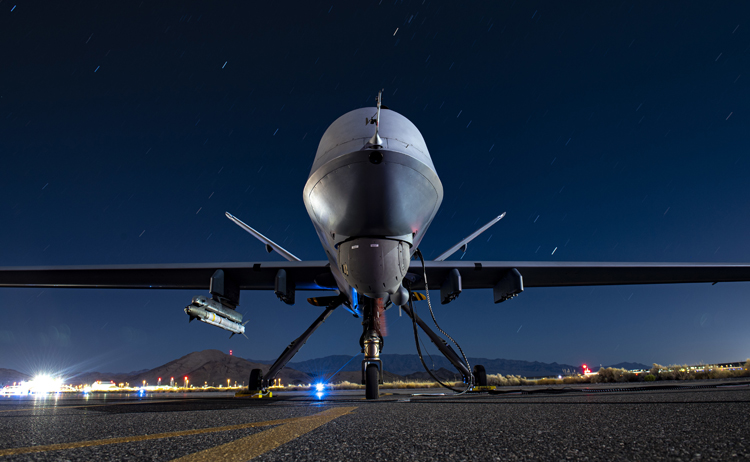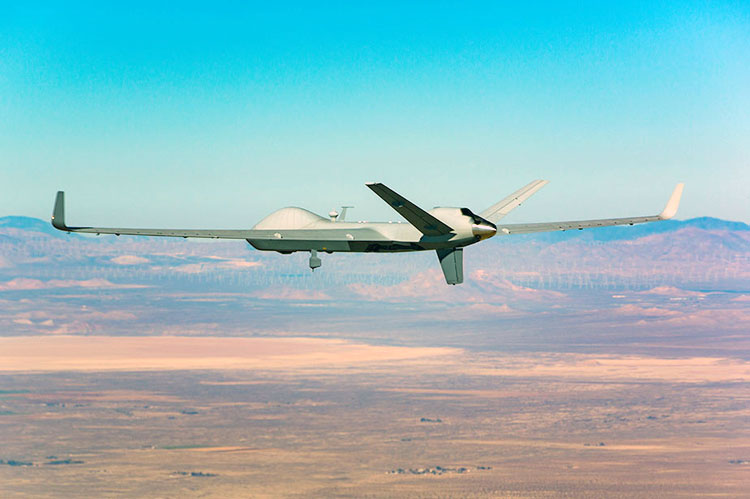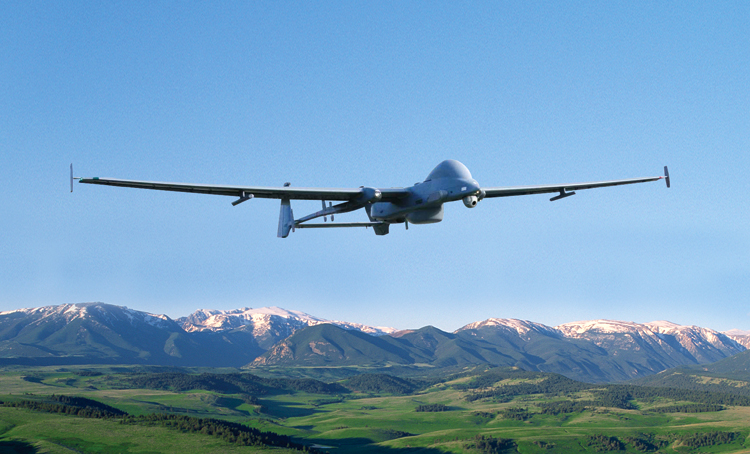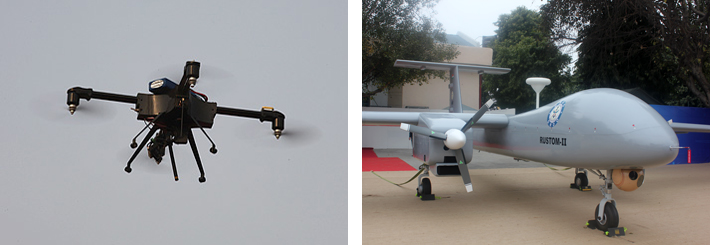INDIAN ARMED FORCES CHIEFS ON OUR RELENTLESS AND FOCUSED PUBLISHING EFFORTS

The insightful articles, inspiring narrations and analytical perspectives presented by the Editorial Team, establish an alluring connect with the reader. My compliments and best wishes to SP Guide Publications.

"Over the past 60 years, the growth of SP Guide Publications has mirrored the rising stature of Indian Navy. Its well-researched and informative magazines on Defence and Aerospace sector have served to shape an educated opinion of our military personnel, policy makers and the public alike. I wish SP's Publication team continued success, fair winds and following seas in all future endeavour!"

Since, its inception in 1964, SP Guide Publications has consistently demonstrated commitment to high-quality journalism in the aerospace and defence sectors, earning a well-deserved reputation as Asia's largest media house in this domain. I wish SP Guide Publications continued success in its pursuit of excellence.
- Operation Sindoor: Resolute yet Restrained
- India’s Operation Sindoor Sends a Clear Message to Terror and the World – ‘ZERO TOLERANCE’
- Japan and India set forth a defence cooperation consultancy framework, talks on tank and jet engines
- Terrorist Attack in Pahalgam in Kashmir: Unfolding a long surgical war against PAK
- Lt General Pratik Sharma takes over Command of Indian Army's Northern Command
Coming - MQ-9 Reapers and Armed Herons
Once cleared by the DAC, the Cabinet Committee on Security (CCS) will need to give its final approval before procurement of the Predator-B armed drones can move forward
 |
The Author is Former Director General of Information Systems and A Special Forces Veteran, Indian Army |

News report of July 29 stated that the deal to acquire 30 US made MQ-9 Reaper or Predator B armed drones for our Armed Forces is being finalised. According to an official from the Ministry of Defence (MoD), "Earlier, one of the services was not keen to go ahead with the procurement of Predator B armed drones. But, now all issues have been resolved. DAC will take a final call on the issue soon." The DAC approval can be taken as granted in backdrop of the recent visit of US Secretary of State Anthony Blinken where the issue would have been discussed. Just before Blinken’s visit, the US has handed over two MH-60R multi-role helicopters to Indian Navy.
India will be acquiring 30 MQ-9 Reaper drones from the US at a cost of $3 billion (approximately 22,000 crore) - 10 each for the three services (Army, Navy and the Air Force) India will be the first country outside the NATO alliance to get the MQ-9 Reaper armed drones
The MQ-9B Reaper, manufactured by San Diego-based General Atomics, has an endurance of 48 hours, can carry a payload of about 1,700 kilograms (3,700 pounds) with a range of over 6,000 nautical miles. It comes with nine hard-points, capable of carrying sensors and laser-guided bombs besides air-to-ground missiles, with a maximum payload of two tons. Media has quoted official sources stating that India will be acquiring 30 MQ-9 Reaper drones from the US at a cost of $3 billion (approximately 22,000 crore) - 10 each for the three services (Army, Navy and the Air Force). These will improve the military’s offensive capabilities especially since presently they operate drones only for surveillance and reconnaissance missions. Last year, the Indian Navy had leased two ‘unarmed’ MQ-9 Predators amidst tension on border with China in eastern Ladakh.

Once cleared by the DAC, the Cabinet Committee on Security (CCS) will need to give its final approval before procurement of the Predator-B armed drones can move forward. When the CCS will give the final nod and how much time the acquisition process will take is anyone’s guess but in 2019, the US administration of President Donald Trump had approved the sale of Predator B armed drones to India. Significantly, India will be the first country outside the NATO alliance to get the MQ-9 Reaper armed drones.
Indian Air Force (IAF) is reviving ‘Project Cheetah’ which is to upgrade its Heron drones into weaponised drones with the help from Israel
When equipped with MQ-9 Reaper armed drones, our Armed Forces will be able to do operate akin to how the US and NATO were operating in Afghanistan. These will enable remote control operations against terrorist bases and launch pads in Pakistan Occupied Kashmir (POK) and for engaging offensive moves of the Peoples Liberation Army (PLA) of China astride our northern borders. These drones also give improved surveillance over long ranges against Chinese vessels in the Indian Ocean. It may be recalled that on January 3, 2020, Iranian General Qasem Soleimani, Commander of Quds Force of the Islamic Revolutionary Guards Corps (IRGC), was killed along with several officials from Iraqi militia backed by Tehran when an American MQ-9 Reaper drone fired missiles into a convoy that was leaving the Baghdad airport.

Aside from the two MQ-9 Reapers leased by the Indian Navy, our forces are operating the Israeli Heron drones and plus the Netra and Rustom drones developed by the Defence Research and Development Organisation. But now the good news is that the Indian Air Force (IAF) is reviving ‘Project Cheetah’ which is to upgrade its Heron drones into weaponised drones with the help from Israel. IAF Chief Air Chief Marshal R.K.S. Bhadauria arrived in Israel on August 3 on invitation of Major General Amikam Norkin, Commander of Israel Air Force. The IAF tweeted, “As strategic partners, India and Israel enjoy strong, multi-dimensional ties, an important pillar of which is defence cooperation and military level exchanges.” The issue of upgrading the Heron drones would have been discussed by the IAF Chief.
The Made in Israel, Heron Unmanned Aerial Vehicle (UAV) is a medium-altitude UAV that can carry up to 250 kg of weight including a thermographic camera, airborne ground surveillance visible light, radar systems, etc. The Heron UAV is capable of returning to base autonomously in case communication is lost with the operator controlling it from the ground station. Project ‘Cheetah’ is a nearly 5,000 crore project which was first taken up in 2013 by the IAF to upgrade the Herons then in use with them. The aim was to give IAF the ability to not only undertake more specialised and longer surveillance missions but also precision strikes with the Herons having the capability to carry and launch air-to-ground precision missiles.

However, reviving of Project ‘Cheetah’ will involve Heron drones of all the tree services - Army, Navy and the Air Force. In all, 90 Heron drones of the three services combined will be upgraded to be armed with laser-guided bombs, air to ground, and air-launched anti-tank guided missiles. According to media reports, this project is in the last stage of decision-making. The upgrade will also include enabling the Herons with the capability of satellite navigation and specialised sensors. The newly equipped drones will help keep an eye on enemy locations from far distances and will also help in controlling them through the satellite communication system.
India should have had armed drones years back given the capabilities of China. Pakistan too claims to have developed its own armed drone, probably has Chinese armed drones and now is going for joint drone production with Turkey. The Chinese aggression last year in Eastern Ladakh has been a wakeup call for us. The government needs to equip our Armed Forces with armed drones in an early timeframe.





